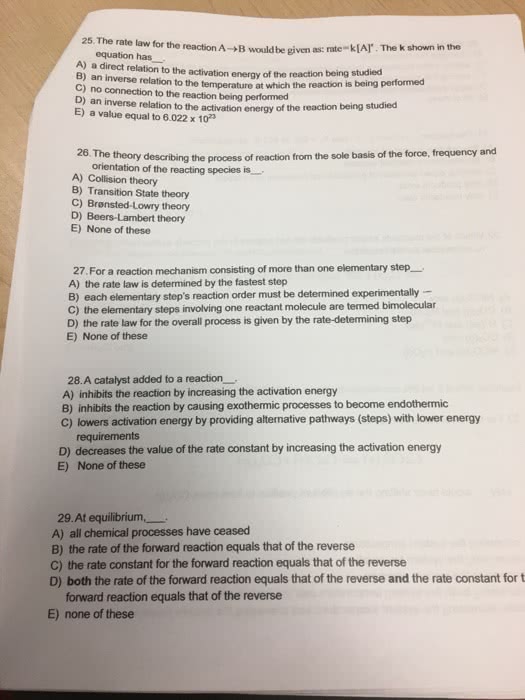CHEM 6C Chapter Notes - Chapter 18: Reaction Rate Constant, Elementary Reaction, Collision Frequency
18.1 Many Reactions Involve More than One Step
● Elementary reactions add up to give a overall reaction
● Catalyst: substances that increases the rate of a chemical reaction but not consumed
○ More favorable chemical pathway → faster
● Increasing concentration → collision more likely
● Elementary reaction: reactions that occur in a single step
● Reaction mechanism: series of elementary reactions add up to reaction equation
○ Step by step pathway → describe molecular pathway
● Intermediate species/intermediate: produced in one step and consumed in subsequent step
○ Intermediate does not appear in overall equation
○ Unstable, reactive
● Biomolecular reactions: elementary reactions that involve the reaction of 2 molecules
● Unimolecular reactions: reactions involving only a single species
○ Decay of radioactive nuclei
● Can write reaction rate law ONLY for elementary reaction
18.2 Reactants Must Surmount an Energy Barrier to React
● Collision theory of reaction rates:
○ 2 species must collide with each other in order to react
● Most collisions do not lead to a chemical reaction
● Must meet two conditions
○ Molecules must collide with sufficient energy either to break or rearrange bonds
○ Molecules must collide in preferred relative orientation
● Reactive collision → two molecules have sufficient energy
○ Rate of reaction = (collision frequency)(fraction of collisions with the required
energy)(fraction of collisions in which molecules have the required relative
orientation)
○ Rate of reaction = k [A][B]
■ k depends on temp and shapes of molecules
● Two factors that affect collision frequency: temp and concentration
○ Greater concentration → greater frequency of collision
○ Temperature increases → molecular speed increases → more collisions
● Activation energy: minimum energy necessary to cause a reaction between colliding
molecules
● Activated complex: represents the state which least amount of additional energy
necessary to pass from reactants to products
○ Cannot be isolated or detected by ordinary means
18.3 The Arrhenius Equation Describes the Temperature Dependence of a Reaction Rate
Constant
● Increase temp = increase rate of reaction



